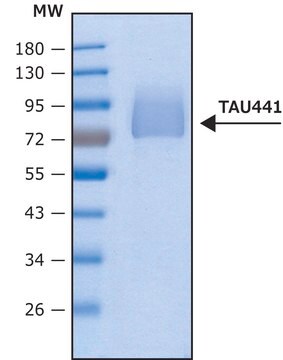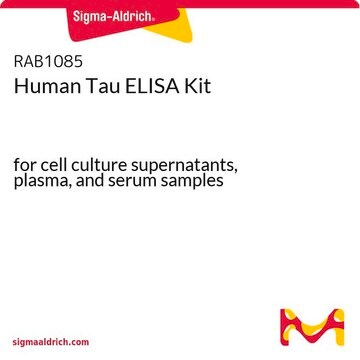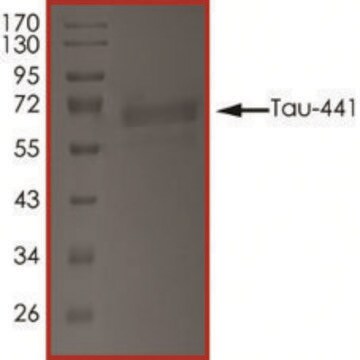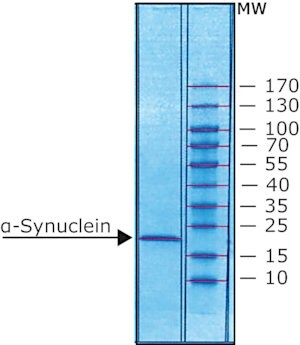T9950
Tau-352 human
recombinant, expressed in E. coli, ≥90% (SDS-PAGE), lyophilized powder
Synonyme(s) :
Human Tau Protein
About This Item
Produits recommandés
Source biologique
human
Niveau de qualité
Produit recombinant
expressed in E. coli
Essai
≥90% (SDS-PAGE)
Forme
lyophilized powder
Poids mol.
36.8 kDa
Numéro d'accès UniProt
Application(s)
cell analysis
Conditions d'expédition
wet ice
Température de stockage
−20°C
Informations sur le gène
human ... MAPT(4137)
Application
Actions biochimiques/physiologiques
Reconstitution
Code de la classe de stockage
11 - Combustible Solids
Classe de danger pour l'eau (WGK)
WGK 1
Point d'éclair (°F)
Not applicable
Point d'éclair (°C)
Not applicable
Équipement de protection individuelle
Eyeshields, Gloves, type N95 (US)
Faites votre choix parmi les versions les plus récentes :
Déjà en possession de ce produit ?
Retrouvez la documentation relative aux produits que vous avez récemment achetés dans la Bibliothèque de documents.
Articles
Alzheimer's disease (AD) is the most common cause of dementia in the elderly and is characterized by gradual loss of cognitive functions.
Notre équipe de scientifiques dispose d'une expérience dans tous les secteurs de la recherche, notamment en sciences de la vie, science des matériaux, synthèse chimique, chromatographie, analyse et dans de nombreux autres domaines..
Contacter notre Service technique






